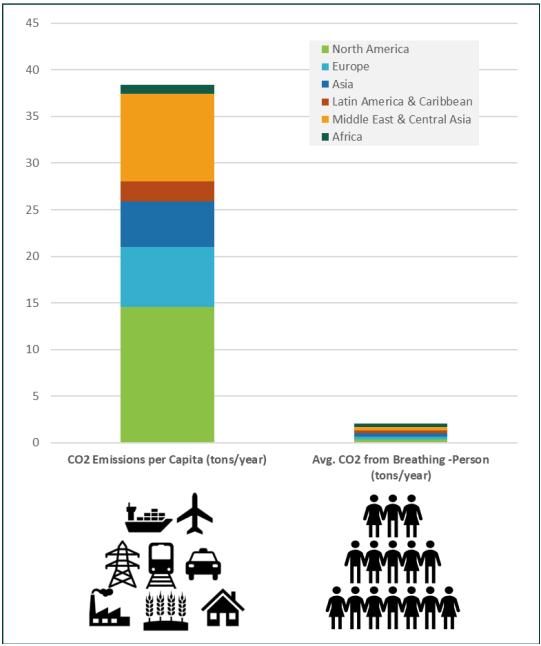Breathing vs. Burning: The Carbon Footprint Contrast
The human body, a marvel of biological engineering, produces carbon dioxide (CO2) as a natural byproduct of respiration. While essential for life, this CO2 emission often gets overshadowed by the staggering amounts of CO2 released through human activities, particularly the burning of fossil fuels. This article delves into the shades of these two sources of CO2, comparing their magnitudes and implications for our planet.
Factors influencing CO2 exhaled:
Age: Children generally have lower CO2 emissions due to smaller lung capacity and lower metabolic rates compared to adults.
Exercise: Physical activity significantly increases CO2 production and exhalation due to higher energy demands and faster breathing rates.
Weather/Seasons:
Hot weather can increase respiration rate, while cold weather might decrease it slightly.
Altitude: Higher altitudes have lower air pressure, leading to increased respiration rates to compensate for less oxygen per breath.
Individual Variations: Metabolism, body size, and overall health can influence CO2 production and exhalation rates.
CO2 from Breathing: A Drop in the Bucket
The average person exhales roughly 336 kilograms of CO2 annually (note that the average annual CO2 exhaled per person can range from approximately 190 kg to 450 kg, with a wider range due to various influencing factors), a considerable amount when viewed in isolation. However, this CO2 is part of the natural carbon cycle. The carbon we breathe out originates from the plants we consume, which, in turn, absorb CO2 from the atmosphere during photosynthesis. Thus, our respiratory CO2 is considered "carbon neutral" and doesn't contribute to the net increase of CO2 in the atmosphere.
CO2 from Human Activities: The Elephant in the Room
In contrast, the CO2 emitted through human activities, primarily the burning of fossil fuels for energy, transportation, and industrial processes, is the main driver of climate change. These activities release CO2 that was previously locked away for millions of years, disrupting the natural carbon cycle and leading to a rapid increase in atmospheric CO2 concentrations.
The disparity between CO2 emissions from breathing and human activities is evident when examining per capita emissions across different regions are shown in the above figure, which highlights that CO2 emissions from human activities overshadow those from breathing, especially in developed regions like North America and Europe.
In conclusion, while individual actions like reducing our carbon footprint through lifestyle changes are important, addressing the climate crisis necessitates systemic shifts away from fossil fuels towards renewable energy sources and sustainable practices. The comparison between CO2 from breathing and human activities underscores the urgent need for global cooperation in mitigating anthropogenic emissions to safeguard our planet's future.

Global CO2 Emissions: A Disparity in Responsibility



